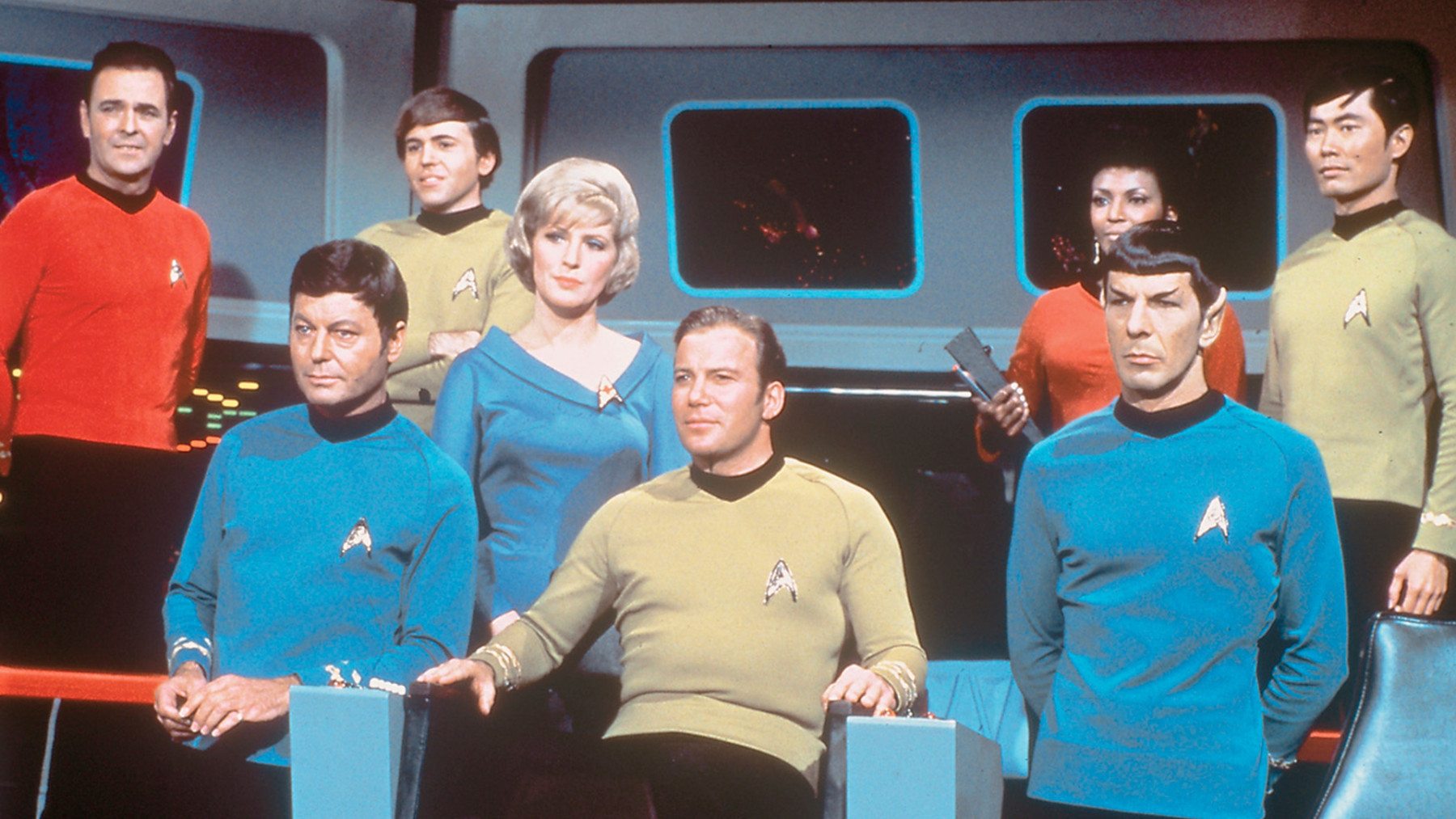Star Trek – a beginner’s guide
Considering Star Trek: Discovery is the first entry in the television series for twelve years, you could be forgiven for having not looked too deeply into the show’s history. While we’ve been treated to three instalments in the parallel-universe film series, Star Trek on the small screen seems almost like a historical curiosity for those who aren’t die-hard fans. While everyone knows Kirk, Spock, and Picard, fewer know Archer and Janeway. So what forms has Star Trek taken over the years, and are they worth your time?
Star Trek (The Original Series)
TOS, as it’s known, is the classic, campy Star Trek experience embedded in our cultural consciousness. Captain Kirk, Mister Spock, and Doctor McCoy formed the famous trio of space adventurers, while Nichelle Nichols and George Takei became household names as well. In truth, the three seasons of the original run contain more chaff than tasty wheat, with infamous episodes like ‘Spock’s Brain’ (where Spock’s brain is literally stolen. Yeah.) and the sexist embarrassment that was ‘Turnabout Intruder’ long derided. However, at its best the show pushed boundaries, showing women and ethnic minorities in equal positions to white men, and reflecting Cold War tensions with the villainous Klingons. One note – iconic line ‘Beam me up, Scotty’ is never once spoken into the entire series.
Recommend? Find an episode guide first.
Star Trek: The Next Generation
Almost as famous as its predecessor, The Next Generation took place a hundred years after the original series, and aired twenty years after in the real world. We saw a slightly bleaker Federation and a more varied crew, with Patrick Stewart’s Jean-Luc Picard overseeing a number of aliens, including fan favourite Klingon security chief Worf. The first Star Trek series to run for seven seasons, the show initially struggled with the same inconsistency as TOS, but over time grew into a more mature and engaging show, with the personal issues of the crew explored, as well as more serialised storylines. Introduced the legendary Borg, the seemingly unstoppable cyborg collective who kidnapped and ‘assimilated’ Captain Picard in ‘The Best of Both Worlds,’ a two-part cliff-hanger finale seen by many as the show’s pinnacle.
Recommend? Yes, if you can survive the uneven first two seasons.
Star Trek: Deep Space Nine
A cult classic, and this author’s personal favourite series, Deep Space Nine changed things up by setting the action not aboard a travelling spaceship, but on a stationary space station, the titular Deep Space Nine. Commander (later captain) Benjamin Sisko, the first black lead, juggles his personal life, the demands of the Bajoran people as they escape the villainous Cardassian’s occupation, and his mysterious role as the Emissary of the Prophets, a species of wormhole aliens who adopt him as their chosen hero to fight a mysterious force. Deep Space Nine adopted a more serialised structure akin to a galactic soap opera, with an ensemble cast that included avaricious Ferengi bartender Quark, war veteran Kira Nerys, and the returning Worf, who would find love on Deep Space Nine. Ambitious in scope, the series included the first major conflict involving the Federation, as the totalitarian Dominion began to threaten the galaxy, led by the shapeshifting Changelings.
Recommend? Definitely, just be prepared to get emotionally invested.
Star Trek: Voyager
A divisive series that inspires visceral reactions in favour and against. Voyager aired contemporaneously with Deep Space Nine, but was a more ‘traditional’ series, focusing on the efforts of the USS Voyager to return home from the distant Delta Quadrant, after being warped there in a mishap. Captain Janeway was the first female lead, but Kate Mulgrew’s portrayal attracted criticism for being inconsistent, which was arguably the fault of the writers. The show introduced many new alien species thanks to its far-flung setting, but the most popular adversaries were the returning Borg, who were at times forced into an uneasy alliance with the Voyager crew, typified by Seven of Nine, a former Borg who was returned to humanity, becoming a sex symbol along the way. Has the unfortunate honour of having an episode declared non-canonical, with the bizarre ‘Threshold’.
Recommend? Has its moments, but one where you’re better off watching the finer cuts only.
Star Trek: Enterprise
Known as just Enterprise for its first two seasons, Enterprise was a prequel series showing the first five-year mission, before the Federation even formed. Widely seen as a failure, Enterprise had some positive moments, notably the Xindi arc of season three, which saw the realities of pre-Federation galactic politics laid bare. Scott Bakula’s Captain Archer was praised as a strong captain by some and hated as a tyrant by others, making questionable decisions. Also diluted its prequel status by adding a Temporal Cold War arc, which forced the action into the far future at times to the confusement of viewers. Never quite as bad as people thought, though the alien Nazi episode was a step too far.
Recommend? Watch the pilot and decide from there.

Comments